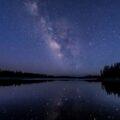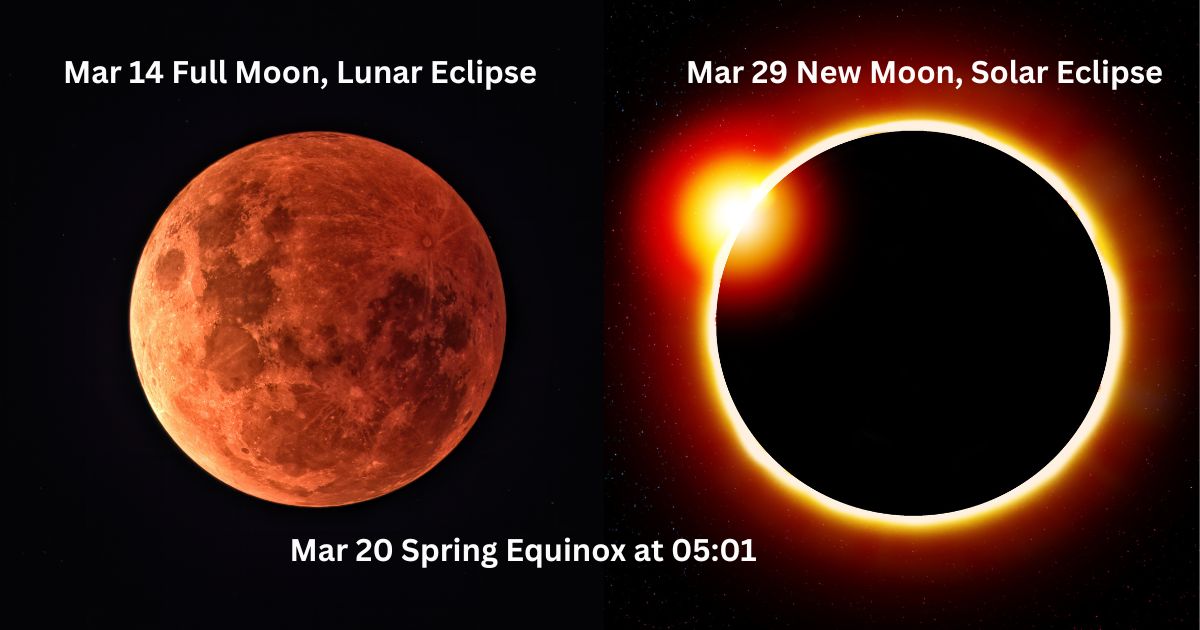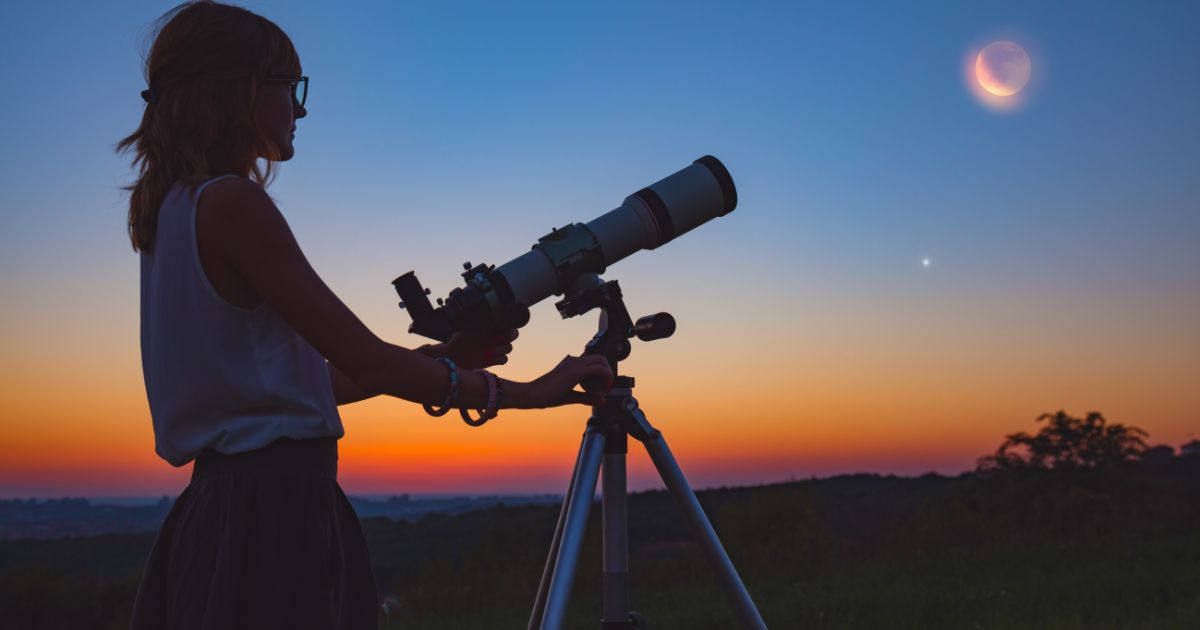The night environment has returned to what it was before the pandemic with lots of light pollution, and air borne particles that produce a haze over the urban and semi-rural landscapes.
As in previous years binoculars help cut through the urban haze and light pollution to reveal star clusters, nebulae and galaxies. They are all you need to take stargazing to the next level, so we encourage readers to keep a pair with them during their walkabouts – even during daytime excursions to “eye-drop” into the activities of wildlife. Even modest visual aids expand our vision and deepen our experience.
We hope the following pages will entice you to go on evening walkabouts and seek out places without artificial lights so you can take full advantage of this guide and your binoculars. Take your time. Discovering the sky is a leisurely activity, so take it as it comes – don’t force it.
GUIDANCE FOR BEGINNERS
All the timings of events presented in this section are based on the City of Ottawa. It is common for almanacs to be centered on the capital of the country for which they are designed. Purely celestial events happen at the same absolute time regardless of location. Since Canada is such a broad country, the time of celestial events must be corrected for your time zone, whether west of Ottawa (add hours) or east (subtract hours). Other events involving a terrestrial reference will require additional corrections for your distance from Ottawa, which are provided in the Ottawa Correction Table.
DETERMINING LOCAL TIME FOR LOCAL EVENTS
Most celestial events listed in the Notable Events column only need correction for your TIME ZONE DIFFERENCE from Eastern Time (Ottawa). However the Sun and Moon tables, and events that reference the horizon or meridian will benefit from the OTTAWA TIME CORRECTIONS TABLE because risings, settings and transits depend on your difference in latitude and longitude from Ottawa.
Once you make the time zone correction from Ottawa’s Eastern Time Zone to your time zone, you can then apply the OTTAWA TIME CORRECTIONS TABLE to get more accurate local times. This corrects for your longitude within your time zone and the latitude difference between Ottawa and your city. Add to your initial time zone correction from Eastern Time the number in the table corresponding to the month and your city, or subtract it if the number is negative.
The entries are given for mid-month so you may wish interpolate to specific days for more accurate values. There will be additional errors in the interpolation of the data if you are not in the city centre or at ground level, however these will be relatively small.
MONTHLY TABLES
These tables provide the times of numerous celestial events. To save space, the Sun and Moon information, and other celestial events are listed using only Ottawa Time, which adopts daylight saving time in March until November. Those not using Daylight Saving (Saskatchewan and few other smaller areas) must convert these times back to standard time. Sorry.
Sunrise and Sunset Columns:
Sunrise is defined as the moment when the upper edge of the Sun first clears the horizon and sunset is timed when the upper limb disappears. The published times are for a level horizon unobstructed by terrain, trees or buildings. We have already applied an average correction for atmospheric refraction (about 1/2 degree), which makes sunrise earlier and sunset later, but the actual amount depends on the air density on that day and are not significant for a casual stargazer.
The Sun still illuminates the high altitude atmosphere when it is below the horizon. This causes the lingering light of dusk and dawn. The beginning and end of these are included in the tables as “civil twilight” which is defined with the Sun is within 6º of the horizon. At the end of civil twilight, the sky will be dark enough for casual observing.
We list the azimuth angle of sunrise and sunset, where azimuth is defined as the angle from true north around the horizon towards the east (i.e. east is 90-degrees azimuth). The altitude of the Sun at midday is in degrees above the southern horizon as seen from Ottawa. You may wish to make corrections for the latitude of your city. Take the difference in the degrees of latitude of your city from Ottawa (45 degrees). It will be positive if you are south of Ottawa and negative if you are further north. Add this number to the value in the ALT column.
Moonrise and Moonset Columns:
The definitions for the Moon columns are similar to those for the Sun columns. Moonrise and moonset times are for Ottawa, but there is no simple way of applying them to other places because the Moon drifts in position with respect to the stars by its own diameter every hour. This is because it orbits eastward around the Earth about 13-degrees per day opposite to the motion of the celestial sphere. (You can see this by watching it pass a bright star during an evening.)
If you live in southern Canada, applying the sunrise/sunset correction to the times of moonrise and moonset will put you within 10 or 20 minutes of the actual time. Occasionally an entry is blank when moonrise or moonset is after midnight. In these cases it appears on the line for the next day.
Notable Events Column
This column will make you aware of various other celestial events and will help you identify specific stars, planets and celestial objects. We give the time for the celestial events in a 24-hour format (hh:mm) that only need your time-zone correction. We choose 10pm time in the Notable Effects column during the late spring and summer months because the sky is significantly darker later in the evening. This corresponds to nautical Twilight when the Sun is more than 12º below the horizon.
To differentiate the local “horizon and meridian” related events we use an AM and PM format. These require both a time zone and Ottawa Time Corrections to be applied. To help read the table, just highlight the line for the city nearest you.
The Notable Events column lists the day the Sun crosses constellation boundaries and the lunar phases. The lunar cycle begins at New Moon, then it passes through First Quarter at about 7 or 8 days of age, Full Moon is at about 15 days of age, and Last Quarter is about 21 days old. The Moon passes through its cycle in 29.5 days. The Moon’s age in days is a convenient way to time the phase. The lunar phase occurs at about the same moment in Vancouver as Ottawa – so it only needs to be corrected for your time zone.
OTHER TABLES
The other tables list information on interesting celestial phenomena and objects. These include lunar eclipses and meteor showers. If it is cloudy, there are no re-runs. Sorry.
There is a table for the lunar phases. Since the planets are usually some of the brightest objects at night, we list their major orbital phenomena so you can begin to imagine their place in our 3-D solar system. Opposition is when the planet is opposite the Sun in our sky – at roughly midnight in standard time. (The Sun and the object in opposition are not visible in the sky at the same time.) At conjunction, the planet is along a line passing through the Sun and Earth. When the planet is between the Earth and Sun it is called an inferior conjunction and a superior conjunction is when the planet is beyond, or behind the Sun on the other side of the solar system.
Elongations are when Mercury and Venus appear farthest from the Sun in our sky after they have orbited out from behind the Sun (eastern elongation in the evening), or are heading around behind the Sun (western elongation in the morning).
We also include a table for lunar and solar eclipses. Although this is not a good year for lunar eclipses, the solar eclipse across North America will be a great opportunity to see this near “life-altering” event.
We also provide reference tables for the constellations by season and the brightest stars.
Tides along the Canadian Coasts
The Canadian Hydrographic Service (CHS) publish tide tables for many marine harbours on the Atlantic, Arctic and Pacific coasts. These are available as PDF publications at https://charts.gc.ca/publications/tables-eng.html.
I hope your skies will be clear and you will enjoy your almanac. Have great 2024.
January 2024 – Happy New Year
One of Canada’s foremost writers and educators on astronomical topics, the Almanac has benefited from Robert’s expertise since its inception. Robert is passionate about reducing light pollution and promoting science literacy. He has been an astronomy instructor for our astronauts and he ensures that our section on sunrise and sunset, stargazing, and celestial events is so detailed and extensive it is almost like its own almanac.













